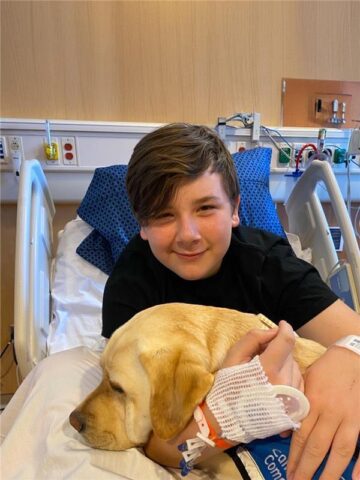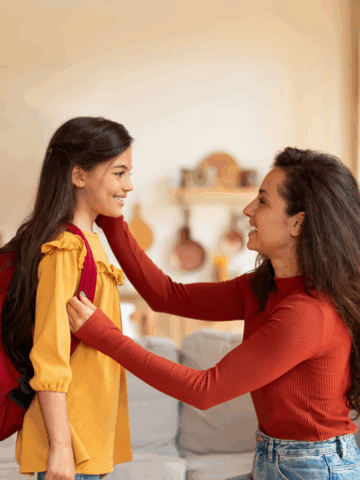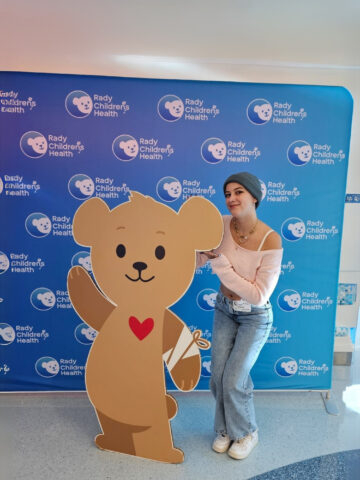By Sydney Sigafus, cancer warrior and CHOC patient
As a teenager and an athlete, my life revolves around sports. As a sophomore at Foothill High School, I’m one of the sports anchors for our school newscast. I’m also a member of the JV girls’ basketball team, which has always been like a second family to me.

During last year’s summer league season, I started to have pains on the right side of my back. I thought I had simply pulled a muscle, so I told my mom about it. Off we went to the pediatrician, who sent us to get an MRI. We were referred to Dr. Nader Nassif, an orthopedic surgeon who sees patients at CHOC. He saw a spot on my upper femur that was small at the time, but that he wanted to keep an eye on. He said it could be a number of things— one of those being cancer— but he didn’t initially think that that’s what it was because of where the spot was on my bone and what it looked like. He told us to come back in three months for more scans.
By our next appointment, the spot had grown by a few millimeters, so we did a biopsy, which is a test that’s performed to examine tissue or cells from a certain part of the body. That test showed that the spot on my femur was cancerous. Dr. Nassif was surprised, since most teens with Ewing’s sarcoma have it in the knees and it grows very quickly, but mine was near my hip and grew very slowly.
Meeting my care team at CHOC
Dr. Nassif told my family that we were going to be working with Dr. Elyssa Rubin, a pediatric oncologist and director of the bone and soft tissue sarcoma treatment program at CHOC. I learned quickly that Dr. Rubin is not only your doctor but also your friend. She would come into my room and not only ask me how I was feeling, but she wanted to know if I was able to see my friends that weekend, if I had made it to the basketball game at school, or if I had seen the latest movie that just came out. I always felt like she cared about me not just as a patient, but as a person. She laid out the game plan very clearly for me and my parents and answered all the questions we had (and some that we asked over and over again). My treatment plan called for six rounds of chemotherapy before surgery and eight rounds after.
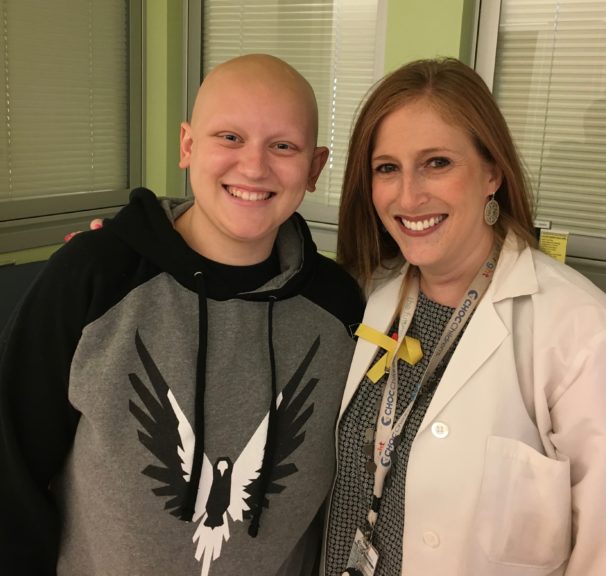
I was lucky to have the very best nurses. They were amazing throughout my entire journey. It stinks to have nausea or not be able to do something with my friends because my counts were down, or even be able go to school — but my nurses, especially my nurse practitioners Liz Torok and Jody Pathare, have made something that seems so tough, a lot easier.
Physical therapy has played a big role in my life after surgery. My physical therapist Robin Beauregard is a two-time Olympic medalist, so as an athlete, she helps me connect with my treatment. She’s no-nonsense and very witty like me, and it makes me really look forward to physical therapy sessions.
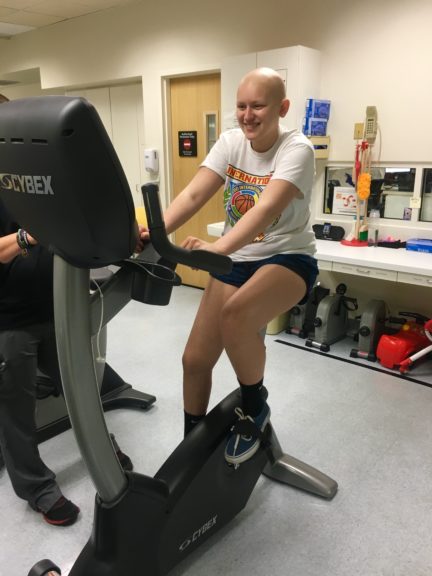
Another group that has made my journey so great has been the child life team. I can’t say enough good things about them, especially Kara, the child life specialist who works with adolescent and young adult patients. She heard I loved sports, and on day one of treatment, she brought me a huge basket filled with swag from my favorite sports teams and even a basketball hoop for my room. I assumed it was a one-time thing, but she has come to visit me every single time I’ve been at CHOC for treatment. She even came into the operating room with me when I needed an epidural for my surgery because I was scared and my parents couldn’t come into the OR with me. It was hard for my parents to be in the waiting room while I was in the OR, but knowing that I had Kara by my side made them feel so much better. During surgery, my tumor was removed and a prosthesis was put in for my upper femur. After finishing eight more rounds of chemotherapy after surgery, my scans confirmed that I was cancer free!

Every single person I’ve met at CHOC has been amazing — especially the woman who cleaned my room. She called me princess!
Making the hospital feel like home
Not only has child life supported me on my journey, but they’ve also helped make the hospital feel less like a hospital. This goes beyond bringing an Xbox to your room to take your mind off your treatment. It starts with the way CHOC looks can you imagine receiving treatment in a place that just had white walls and a white floor? CHOC is the opposite. It’s colorful. It has gardens you can go outside and sit in. There are playrooms everywhere. There’s a lounge that’s just for teens. I’m not musical or artistic, but for the patients that are, they’ll bring you instruments and introduce you to a music therapist, or bring you drawing and painting supplies.
Finding support in unexpected places
When I started this journey, I felt so alone. What are the chances I would know another teenager that is going through this? I soon realized that I did have someone who understood what I was going through, someone that I looked up to even before I was diagnosed with cancer. When I was a freshman, there was a senior at my school who was fighting osteosarcoma (a type of bone cancer) in her knee. Claire was an athlete like me before she was diagnosed with cancer. Our school recognized her as Homecoming Queen during her treatment, and I remember watching her use crutches during the ceremony where she received her crown. At the time, I thought she was so amazing, and I was really moved by her story. Six months later I received my own diagnosis. Claire immediately reached out to me, met me at the hospital and has been offering me nonstop support ever since.
Another pleasant surprise was getting to meet the doctor who delivered me 15 years ago! Dr. Gigi Kroll is a member of the CHOC Foundation Board of Directors, and I got to meet her at a fundraising event for the Hyundai Cancer Institute at CHOC. My mom had a complicated delivery when I was born, and I’d heard a lot growing up about how wonderful her doctor had been. It was so cool to meet her in person, and nice to know that she’s part of making CHOC the amazing hospital it is today.
Choosing to be positive
I’ve always been a happy and positive person, but I’m also realistic. Of course there’s going to be times on this journey when you’re sad, because who doesn’t get upset about cancer? But I’ve learned that if you’re sad, it’s going to make a bad situation ten times worse.
Even with all the support around you, it’s important to realize that there is only so much other people can do for you. There comes a point where you have to do things for yourself and choose to be positive.
I try to be positive all the time. I have a great support system, which includes my family, my friends, my doctors, my nurses and child life.
On the day of my surgery, I set a goal to be able to walk back into school for the start of my junior year. A few weeks ago, I accomplished that goal! I’m starting to think about colleges, and I’m looking to study kinesiology. I want to become a pediatric physical therapist and an athletic trainer.
I’ve learned a lot from this journey. My family and I have been incredibly blessed by my care team and other families who have taken us under their wing, and I want to repay them by doing whatever I can to help motivate other patients who may be struggling to stay positive.
Get more expert health advice delivered to your inbox monthly by subscribing to the KidsHealth newsletter here.
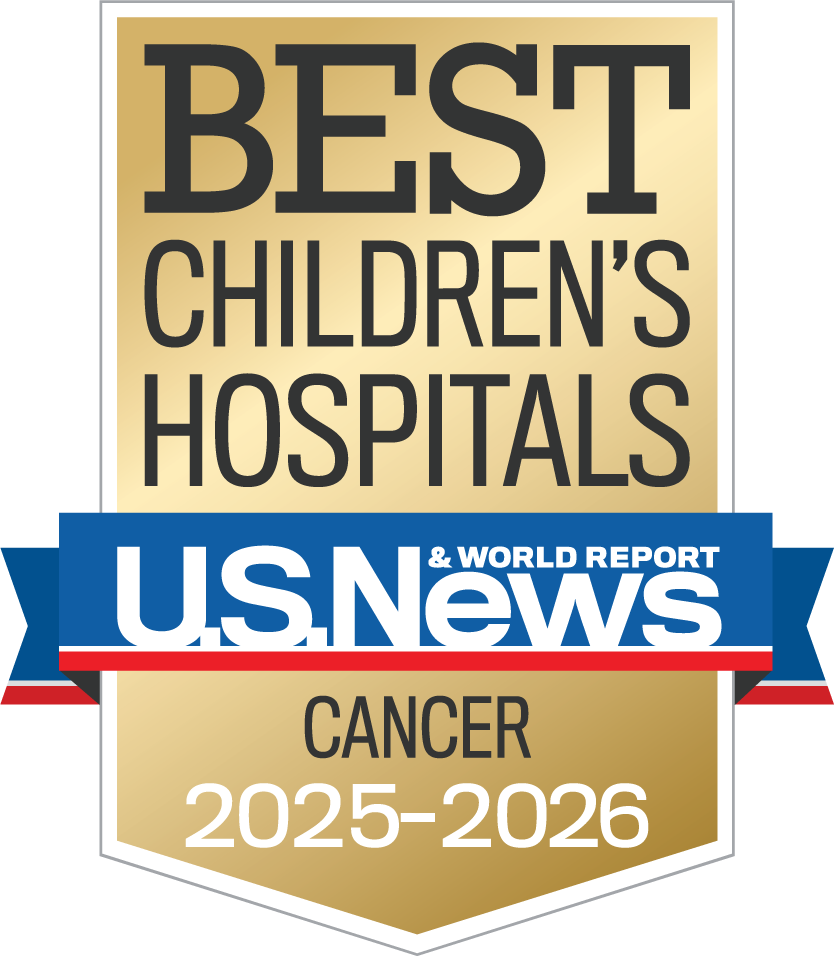
Learn more the Hyundai Cancer Center at CHOC
CHOC Hospital was named one of the nation’s best children’s hospitals by U.S. News & World Report in its 2025-26 Best Children’s Hospitals rankings and ranked in the oncology specialty.

